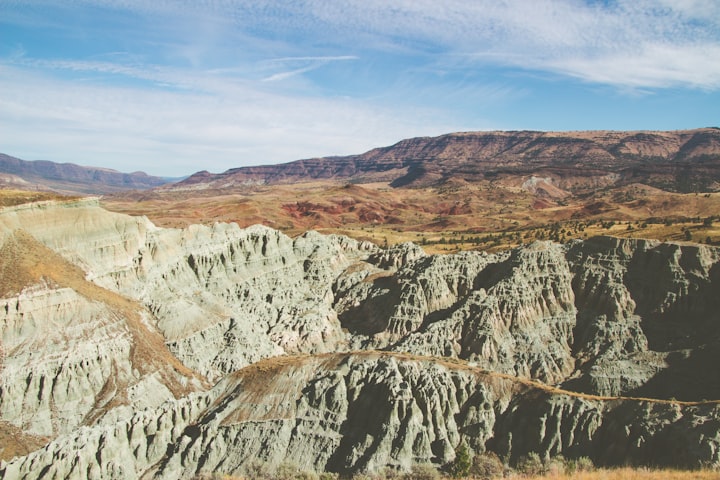China’s Zhurong Mars rover finds hints landscape was shaped by water
China’s Zhurong Mars rover finds hints landscape was shaped by water

The Chinas Zhurong rover settled in the Utopia Plain, a large plateau north of the planet, in May 2021. During the first 60 days (March) of the Chinas Zhurong rover, it conquered 450.9 meters of flat land. with small stones.
Like many rovers before China's Zhurong rover, Zhurong will explore the planet's environment and look for signs of water ice on the globe. The Chinaas Tianwen-1 mission on Mars, among other things, will search for water packets using a radar mounted on a Zhurong rover. The European Space Agency Mars Express spacecraft found groundwater using radar from orbit, but with NASA's Perseverance China as Tianwen-1 rover, the Mars campaign will be the first time a rover has landed.
Its Zhurong rover has not yet been discovered and explored, but geologists are already exploring satellite imagery and geological maps to find species of animals to study. Over the next few days, the China National Space Administration team will check whether its Zhurong rover is working before dropping it off at the residence.
Awesome images of the Zhurong rover launching Mars against China National Space Administration (CNSA) launching the Zhurong rover over Mars. In addition to making your own image of the Zhurong rover, CNSA also released a new image of the first arrival of the rover on Mars, about a week later from the platform. China's Zhurong rover landed safely on Mars on May 15, making China the third country to arrive successfully on Mars.
Even more impressive is the fact that China is the first country en route to Mars to make orbit, settlement, and rover as its first mission. In the next few years, we can expect China to release man-made missiles from its Tiangong spacecraft, and in the next few decades, we can expect China to join other astronauts in space travel to the Moon and Mars. Together with the global scientific community, I look forward to the important role this campaign will play in understanding the human Mars. Dozens of unmanned spacecraft, including orbiters, landers, and rovers, have been sent to Mars from the Soviet Union, the United States, Europe, India, the United Arab Emirates, and China to explore the earth, state. meteorology and geography of Mars.
NASA's Mars Science laboratory uses NASA's Curiosity Mars Rover to study ancient habitats and significant changes that have taken place in the Martian region over millions of years. New data from NASA's Curiosity rover indicates that the Sharp Mountain of Mars was formed by a layer below the largest lake in ten million years, suggesting that ancient Mars maintained a climate that could have created lakes in many parts of the Red Sea. . The planet. NASA's Curiosity rover is currently studying the lower layers of Mount Sharp on Mars, a 500-meter (150 m) rock called Murray Formation. After traveling 5 km (8 km) from NASA's Curiosity rover in 2012 to its current location below Mount Sharp, the rover underwent crater floor changes during the lake.
The patterns observed on Mars significantly increase the presence of liquid water on the surface of Mars. Another evidence of the presence of liquid water on Mars is the presence of certain minerals such as hematite and goethite, which sometimes form in front of the water. The amount of deuterium on Mars is eight times higher than Earth, indicating that ancient Mars had very high water levels. Some scientists have warned that the findings of the Curiosity rover are yet to be confirmed, noting that Martian weather conditions have not yet shown that temperatures above Mars were high enough for water to remain liquid.
Soil samples taken from the Chinas Zhurong rover landing site were found with the same structure as samples collected from a few rovers elsewhere on Mars. At the same time, the rover was collecting data to study geology geography and the Martian landscape, which included taking soil and dust samples and taking photographs using the NaTeCam camera.
The Chinas Zhurong rover also encountered several ripples in the Martian area, wind-shaped features composed of loose debris a few feet long. Now, preliminary information from the Chinas Zhurong rover indicates that the web page has been under long weather due to wind and drinking water in the past.
Most interesting is the potential mud volcano, a non-rover site on Mars that has ever been visited. This Mars region was formed billions of years ago when a Martian meteorite hit the planet. The arrival of the Zhurong rover has a permanent parachute that operates to reduce equipment to make it more comfortable in the Martian area.
The Zhurong rover explores Mars known as Utopia Planitia and has traveled about 236 feet (236 meters in total) to 42 solar panels since yesterday. Its Zhurong rover landed in a huge tunnel called Utopia Planitia about 1,800 miles northeast of NASA's Perseverance rover, which landed in February. Chinese citizen Tianwen-1 successfully landed on Mars on May 14, 2021 (May 15 Beijing time).
About the Creator
Enjoyed the story? Support the Creator.
Subscribe for free to receive all their stories in your feed. You could also pledge your support or give them a one-off tip, letting them know you appreciate their work.





Comments
There are no comments for this story
Be the first to respond and start the conversation.